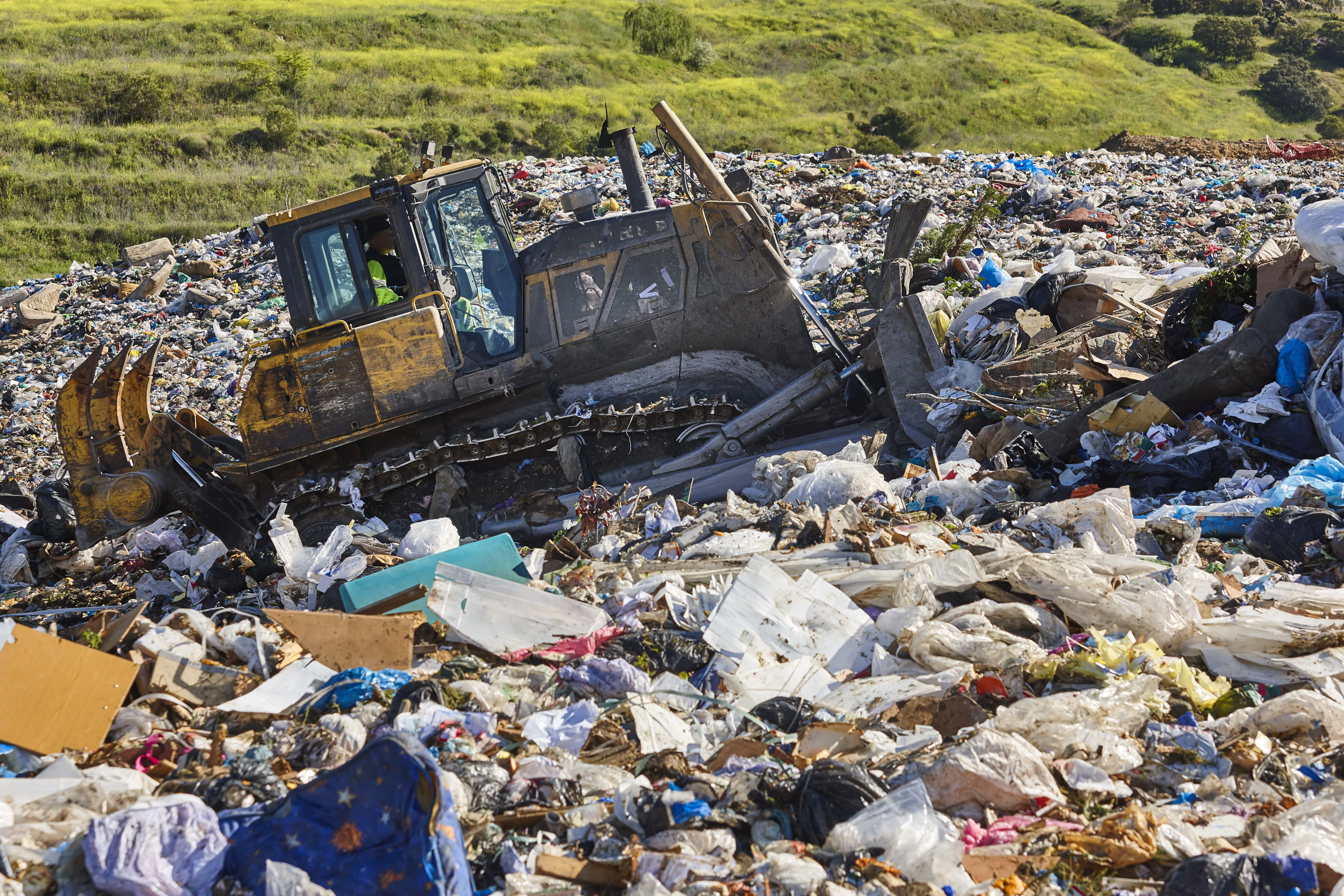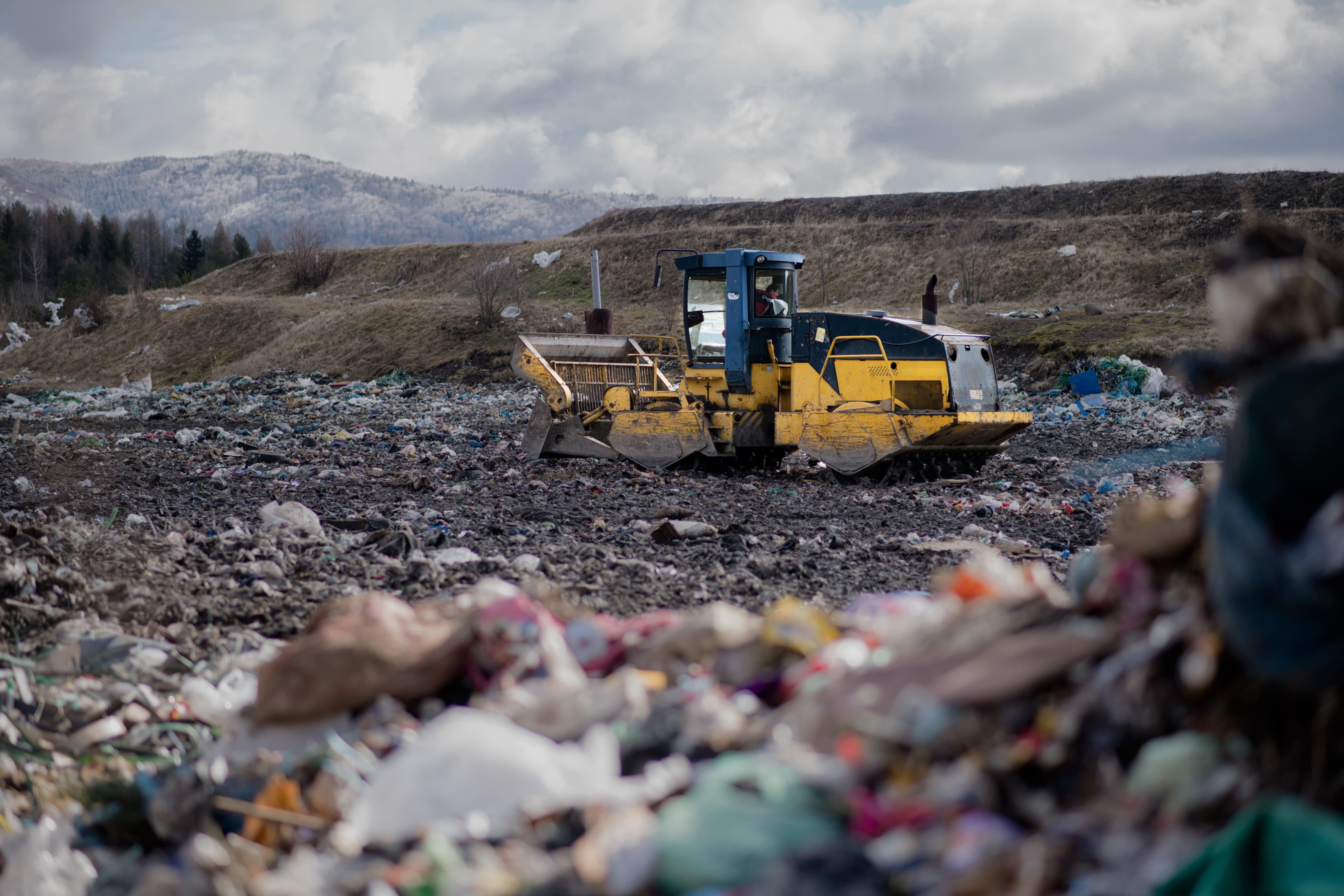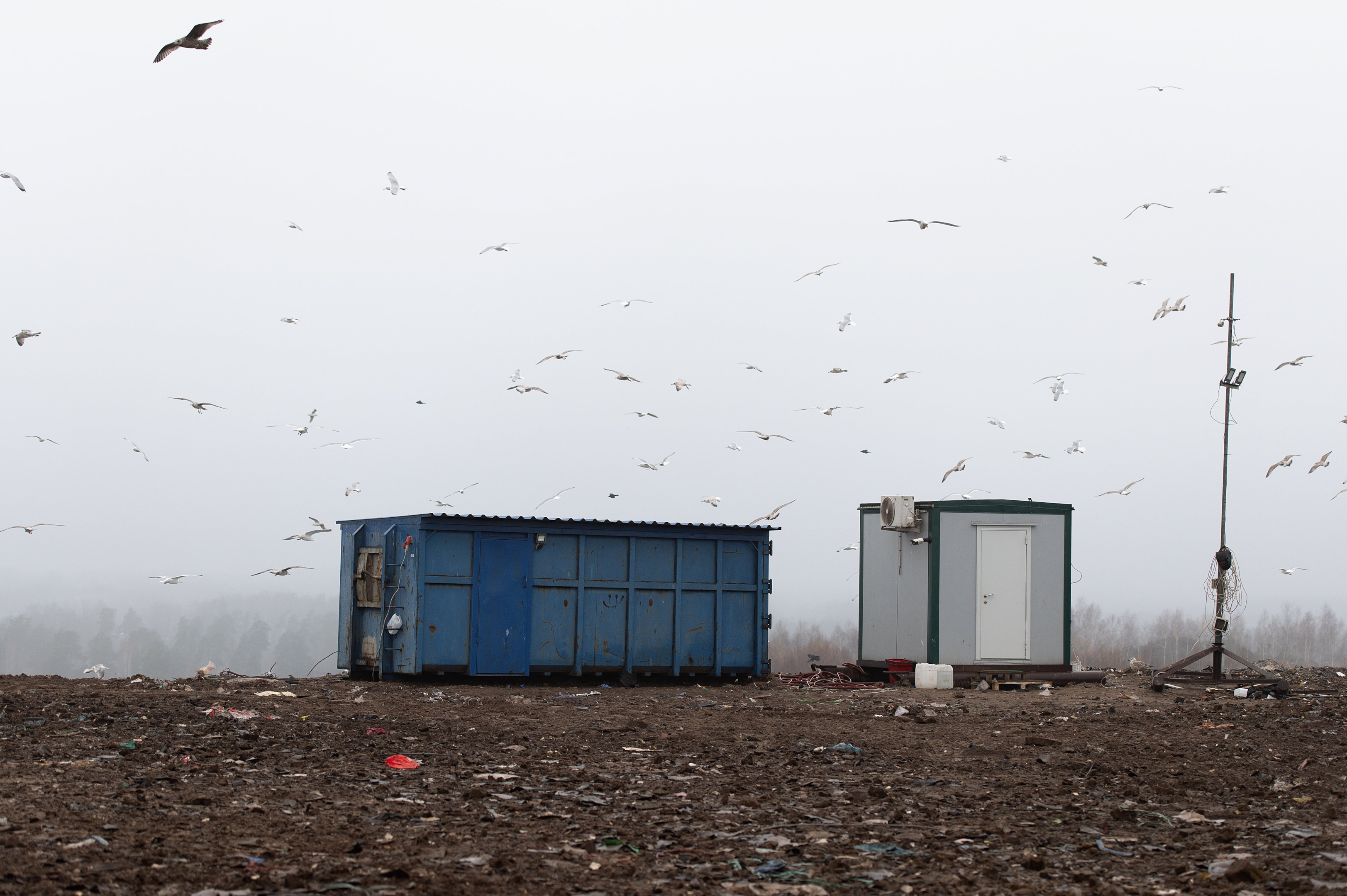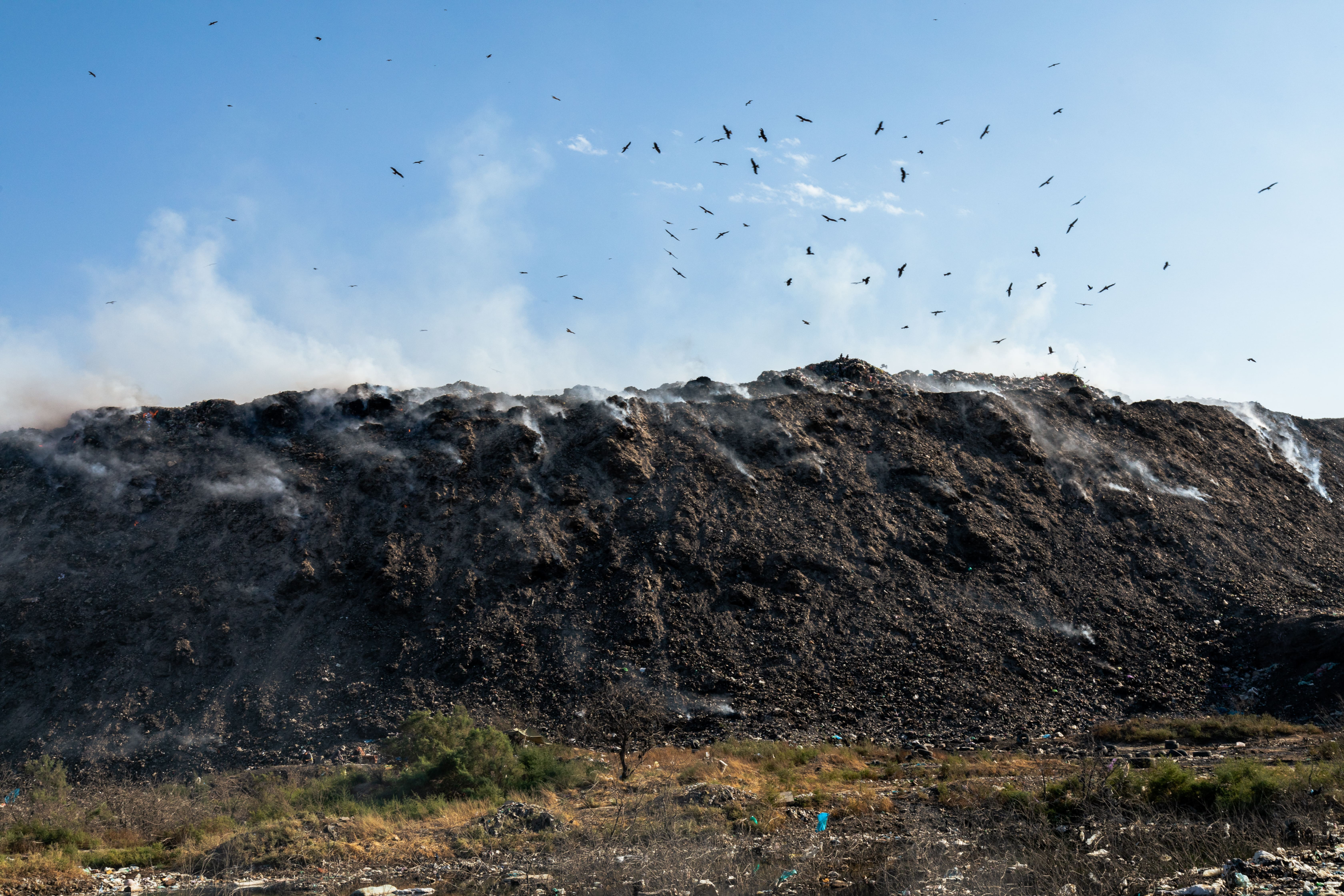When your bags of rubbish are taken away is it out of sight out of mind? Do you know whether your waste is being recycled, burned for green energy, or being dumped on a landfill site? And if it’s the latter, is that really so bad?
More people are questioning what happens to their waste once it’s collected. After years of over consumption (and let’s not kid ourselves we’re out of that era), and shipping plastic waste to China, waste management is a major cost for councils and ultimately the taxpayer.
Is landfill the solution?

At First Mile we have a zero to landfill policy. But why? What happens to waste in landfill and is it really a problem?
We’re taking a deep dive into landfill (what a lovely thought!) and answering some of those questions. Come with us we put on our rubber gloves and sort through the facts about landfill sites and waste disposal.
What is landfill and how does it work?
Our consumption culture means waste is inevitable.
Even the most avid recycler will have some rubbish, things that aren’t easily recycled. When local authorities don’t offer a full range of recycling options, a larger portion of that rubbish could end up in general waste, which, in many areas will mean it goes to landfill.
A landfill site is a plot of land designated for waste by local authorities. Once it’s at full capacity, that waste is covered over and landscaped.
All you see is green space with no indication that underneath are piles of discarded, foul-smelling rubbish and hazardous waste that has been buried and left to rot, where it produces methane gas and causes harm to human health.
What happens to waste in a landfill site?
Once a landfill site is covered over and landscaped, it really is a hidden problem, and you’d be forgiven for not knowing the real impact. You might imagine for example, that food waste and cardboard will rot away and act as a compost in the ground.
But without sunlight and oxygen to speed up decomposition, organic biodegradable waste can cause significant problems – we’ll come on to that.
How long does rubbish last in a landfill site?

Most of the discarded rubbish is going nowhere fast. We’ve all heard the stats about how long it takes waste to ‘disappear.’ It takes up to 80 years for crisp packaging to break down in landfill and hundreds of years for nappies.
Think about it: disposable nappies became mainstream in the 1970s. That means every nappy that ended up in landfill (and until recent times that was most of them) is still there – rotting away underneath the cover of earth.
The plastic in those nappies and all the rest of the plastic waste isn’t decomposing, it’s breaking down into smaller parts to eventually become microplastics that are present in every area of the planet – our seas, our food, our bodies, our babies.
What problems are caused by landfill sites?
When landfill sites are in use, they are literally a pile of rubbish, and as you’d imagine, they don’t smell great.
Whilst the Environmental protection agency has strict regulations around managing landfill sites to reduce the impact on the surrounding area, there are many examples of communities campaigning because of the effect of a site on their health and well-being.
Emissions from Walleys Quarry landfill in Staffordshire have been bad enough for the council to request legal action against the operator and an independent study to look at how the landfill has affected the physical and mental health of local residents.
Once a site is full, it will be covered over so that the waste is isolated from rain, air, and groundwater. The purpose of this is to stop it coming into contact with the surrounding environment and causing contamination.
However, without oxygen and sunlight to help with decomposition, biodegradable waste is broken down by a bacterial reaction. This produces gases, including methane and a liquid called leachate.
What is landfill gas?

Methane is highly flammable and can explode if allowed to build up underground, so landfill sites have to create outlets for the gas to be released.
But releasing the gas causes a problem - methane is one of the largest contributors to global warming, second only to CO2 (carbon dioxide). Methane represented 13% of total greenhouse gas (GHG) emissions in the UK in 2022* and waste was responsible for 30% of that methane.
Are landfill gas emissions harmful?

While historically, landfill sites were designed to release methane via outlets to the surface, now many landfills have pipes that collect the gas, which is then sent to be burnt off for energy in a process called landfill gas monitoring. However, the environmental damage far outweighs any energy that is produced.
Landfill gases i.e. methane and carbon dioxide, are generated by biodegradable items such as food, paper, garden waste and organic matter.
In 2021, the UK sent 6.8million tons of biodegradable waste to landfill a slight increase on the previous year** This gives you an indication of the scale of our waste and how much the UK waste management needs reform, which thankfully is coming soon (read about the Simpler Recycling reforms below).
Landfills also produce landfill leachate. A liquid that seeps through rubbish, collecting toxic substances along the way. If not carefully managed, leachate can threaten both surface and ground water, contaminating water supplies and the local environment.
So those are the two main issues around landfill sites. We can see that they’re problematic and contribute to climate change and local pollution. But what is the alternative to landfill? Is there a more eco-friendly waste management system that will reduce the environmental impact of our waste?
Landfill tax for business waste
Businesses who dispose of their waste in landfill are also hit with a landfill tax, put in place to prevent pollution and encourage businesses to use greener methods of waste disposal.
Rates are updated annually, but currently stand at
-
A lower rate for ‘inactive waste’ (such as rocks or soil): £3.30 per tonne in 2024-25.
-
A standard rate for all other waste: £103.70 per tonne in 2024-25.
The Solution: Zero to landfill + Waste-to-Energy
So, now it’s clear why landfill is so bad, here’s the alternative – zero to landfill recycling and waste management.

Zero to landfill does exactly what it says on the tin – ensures no waste ends up in the ground in a landfill site. At First Mile it’s a fundamental part of our ethos.
Unfortunately, not everything can be recycled, but instead of adding to the landfill problem, we take it to a waste-to-energy facility. Here rubbish can be safely incinerated to generate electricity. For remnants that can’t be burned, they are packed down into building materials.
It’s a simple equation: by offering a broad range of recycling services to our customers, they have less ‘general’ waste.
We collect and recycle items such paper towels, coffee cups, single use plastic and more so they don’t end up in a general waste bag (you might be surprised at what else we can recycle – take a look at our services page).
Increasing recycling and reducing general waste is a good result for the company – it lowers their costs as general waste disposal is more expensive, and it’s a great result for the planet – avoiding landfill and creating more green energy.
The Simper Recycling Reforms
The Simpler Recycling reforms will tackle the issue of food waste and improve recycling across the country. The new legislation means from March 2025 organisations must separate food waste for collection.
All food waste will eventually be used for compost or incinerated to create green energy. This is something we’ve always done at First Mile, so there’s no need for companies to wait for the reforms to kick in next year.
Organisations that have food waste collections with First Mile know they’re not adding to the landfill problem. By partnering with us, they’re making sustainable choices that have a positive impact on the environment.
Talk to us to find out how you can reduce the environmental impact of your organisation.
* Environment Agency Methane Action Plan 2024 to 2026
** Waste Data Interrogator, Defra Statistics



